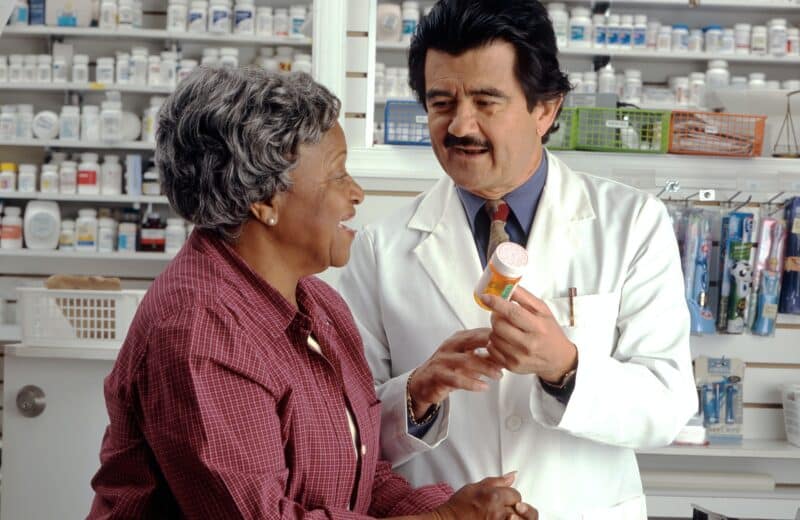Harvard Health Blog
By Monique Tello, M.D., M.P.H.
Many of my patients who come into the office for their physical exams ask to have their vitamin D levels checked. They may have a family member with osteoporosis, or perhaps they have had bone thinning themselves. Mostly, they want to know that they’re doing everything they can to keep their bones strong. Vitamin D is critical for healthy bones. But when we check that blood level, how to act on the result is the subject of great controversy in medical-research land.
Pinpointing a “healthy” vitamin D level is tricky
So, what is the current cutoff value at which people are considered “low,” and thus at risk for developing bone thinning and having fractures? (We are talking about the blood level of 25-hydroxy-vitamin D, which is usually measured in nanograms per milliliter.) Ah. This is where there is a lot of argument.
In 2010, the venerable Institute of Medicine (IOM) issued a report based on lengthy examination of data by a group of experts. To sum up, they estimated that a vitamin D level of 20 ng/mL or higher was adequate for good bone health, and subsequently a level below 20 was considered a vitamin D deficiency.
In my practice, and in most, it is not uncommon to see a vitamin D level less than 20. When that happens, we tell the patient that they are deficient and recommend fairly aggressive replenishment, as well as ongoing supplementation. The majority of folks have a level between 20 and 40, in my experience, and this is corroborated by the IOM’s findings in that 2010 report.
But in 2011, the respected Endocrine Society issued a report urging a much, much higher minimum blood level of vitamin D. The society’s clinical practice guideline was developed by experts in the field assigned to a Vitamin D Task Force, and they concluded: “Based on all the evidence, at a minimum, we recommend vitamin D levels of 30 ng/mL, and because of the vagaries of some of the assays, to guarantee sufficiency, we recommend between 40 and 60 ng/mL for both children and adults.”
But wait, there’s more…
The most recent opinion on the right target level of vitamin D is presented in an article titled “Vitamin D Deficiency: Is There Really a Pandemic?” published in the New England Journal of Medicine. In this piece, several of the leading epidemiologists and endocrinologists who were on the original IOM committee argue for a lowering of the currently accepted cutoff level of 20, stating that the level they estimated as acceptable was never intended to be used to define vitamin D deficiency. They feel that we are overscreening for vitamin D deficiency, and unnecessarily treating individuals who are perfectly fine.
Based on their analysis, a more appropriate cutoff for vitamin D deficiency would be much lower, 12.5 ng/mL. They examined a massive amount of data from the National Health and Nutrition Examination Survey (NHANES) for 2007 through 2010, and found that less than 6 percent of Americans had vitamin D levels less than 12.5. A cutoff of 12.5 ng/mL would most certainly eliminate the “pandemic” of vitamin D deficiency.
And the controversy boils on, with many articles and statements made to support one or the other guideline.
Some perspective on what is, and isn’t, vitamin D deficiency
I spoke with osteoporosis expert Joel Finkelstein, M.D., associate director of the Bone Density Center at Massachusetts General Hospital, whose research in this field spans over three decades. He agreed with the authors of the NEJM article that we are currently overscreening for vitamin D deficiency, and overtreating people who are getting enough vitamin D through diet and sun exposure. “Vitamin D has been hyped massively,” he states. “We do not need to be checking the vitamin D levels of most healthy individuals.”
He points out that from an evolutionary standpoint, it doesn’t make sense that higher vitamin D levels would be beneficial to humans. “Vitamin D is actually quite hard to find in naturally occurring food sources,” he points out. “Yes, we can get vitamin D from the sun, but our bodies evolved to create darker skin in the parts of the world that get the most sun. If vitamin D is so critical to humans, why would we evolve in this way, to require something that is hard to come by, and then evolve in such a way as to make it harder to absorb?”
So who should be screened for vitamin D deficiency?
Finkelstein and his colleagues recently published a study of more than 2,000 perimenopausal women who had been followed for almost 10 years, and they found that vitamin D levels less than 20 were associated with a slightly increased risk of nontraumatic fractures. They concluded that because few foods contain vitamin D, vitamin D supplementation is warranted in women at midlife with levels less than 20 ng/mL. “For perimenopausal women or other groups of people with higher fracture risk, certainly a level of 20 or above is ideal,” and he adds: “For the vast majority of healthy individuals, levels much lower, 15, maybe 10, are probably perfectly fine, and so I would say I agree with what the authors of the New England Journal perspective article are saying.”
All that said, most experts, including Finkelstein, agree we should be checking vitamin D levels in high-risk people — those most at risk for a true deficiency. These include people with anorexia nervosa, people who have had gastric bypass surgeries, who suffer from other malabsorption syndromes like celiac sprue, or who have dark skin, or wear total skin covering (and thus absorb less sunlight). In addition, certain populations will require that vitamin D level of 20 ng/ml or higher. This can include perimenopausal women, people diagnosed with osteopenia (reduced bone density, but not osteoporosis) and osteoporosis or other skeletal disorders, as well as pregnant and lactating women. All of these groups should be screened and treated as appropriate.
(Monique Tello, M.D., M.P.H., is a contributing editor to Harvard Health Publications.)













